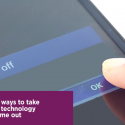What Is Juuling?
What in the world is a JUUL? That’s what I wondered when I first heard of it. Since we already know without a doubt that smoking tobacco or combustible cigarettes is bad for our health, an alternative to smoking sounds promising. However, just because something is less harmful, that does not mean it is safe.
A closer look at JUUL
JUUL is one brand of electronic nicotine delivery systems (ENDS) or “electronic cigarettes,” and a very popular brand to say the least. JUUL has become increasingly well-known and used since its launch in 2015. The term “electronic cigarettes” is an umbrella term the covers a variety of products on the market; some resemble a cigarette or a pen, while other products are much larger like “personal vaporizers” and “tank systems.” Instead of burning tobacco like conventional cigarettes e-cigarettes use a battery-powered coil to turn a liquid solution into an aerosol the user inhales.
A JUUL device looks like a USB flash drive and can, indeed, be charged in the USB port of a computer. According to JUUL Labs, a JUULpod, a pre-filled e-liquid cartridge, is inserted into a JUUL device; this JUULpod contains the flavorings, nicotine, and e-liquid.
Amount of nicotine in 1 pack of cigarettes = 1 JUUL pod (about 200 puffs)
Why would anyone JUUL?
Wide-reaching campaigns on Twitter, Instagram, and YouTube have transformed JUUL into the largest retail e-cigarette brand in the USA in 2017, accounting for about 40 percent of e-cigarette retail market share. JUUL uses marketing images that resemble Big Tobacco’s glamorization of combustible cigarettes—knowing that consumers, especially the young, will buy into them. Meanwhile, lawsuits for deceptive marketing mount against the manufacturer, arguing that users are becoming addicted to a product they think is safe. Even the Food and Drug Administration (FDA) announced in August of 2018 that it is cracking down on the sale and marketing of e-cigarettes like JUUL.
JUUL’s trendy design, among other features such as high levels of nicotine and youth-friendly flavors, makes it especially popular with young people. It’s often called “the iPhone of e-cigarettes.”
In addition, other companies produce JUUL “wraps” or “skins,”—decals that wrap around the JUUL device and allow the JUUL user to customize their device with unique colors, patterns, or images. This may be especially appealing to younger users because it allows them to disguise their device or personalize it as if it were a toy.
Is it safe?
As many are aware, combustible tobacco products, primarily cigarettes, are the single greatest cause of cancer and kill about 7 million people worldwide each year. Millions of consumers are trying to quit combustible tobacco products, and sometimes use ENDS as a method to do so. Based on current available evidence, the American Cancer Society stated that “using current generation e-cigarettes is less harmful than smoking cigarettes, but the health effects of long-term use are not known.”
However, less harm doesn’t mean safe. Recent studies have found an increase in DNA damage caused by known toxic chemicals
- Formaldehyde: A probable carcinogen.
- Acrolein: Formed from heated glycerin, acrolein can damage the lungs and contribute to heart disease in smokers.
While other brands use a chemically modified form called “freebase nicotine,” JUULs use “nicotine salts” that more closely resemble the natural structure of nicotine found in tobacco leaves. This makes the nicotine more readily absorbed into the bloodstream and makes the vapor less harsh so that it is easier to inhale more nicotine for longer periods of time. The real challenge is that e-cigarettes are a relatively recent phenomenon, and therefore no long-term studies or research exists to confirm whether these products are safe. It took centuries for us to learn that tobacco smoking was harmful; a little over a decade is just not enough time to know the effects. In addition, e-cigarettes are always changing. New devices come and go before being able to be studied for safety.
A study from Truth Initiative found that a quarter of youth and young adult JUUL users don’t refer to JUUL use as “e-cigarette use” or “vaping”, but rather as “JUULing.” Therefore, it is possible that existing surveys may not be capturing the full spectrum of youth or adult e-cigarette use.
NOT safe for our youth!
Could e-cigarettes help adult smokers give up combustible cigarettes? This is still an open scientific question, but adolescents should not be using any nicotine product—including e-cigarettes. Nicotine is a highly addictive drug that can have lasting damaging effects on adolescent brain development in addition to its impact on the cardiovascular system. Several studies have even shown that e-cigarettes have become a gateway to smoking combustible cigarettes among youth. Aside from these dangers, federal law prohibits selling e-cigarettes to anyone younger than 18 years old.
A study from Truth initiative found that 63 percent of 15- to 24-year-old JUUL users did not know the product always contains nicotine (all pods sold from JUUL do contain nicotine). That’s why it is important to educate young people about the dangers of JUUL and other ENDS.
You May Also Like:
https://www.upmcmyhealthmatters.com/are-e-cigarettes-safer-than-cigarettes/
References
https://www.tobaccofreekids.org/assets/factsheets/0394.pdf
https://tobaccocontrol.bmj.com/content/early/2018/05/31/tobaccocontrol-2018-054382
https://www.lung.org/about-us/media/press-releases/FDA-The-Real-Cost.html
https://www.cancer.org/healthy/stay-away-from-tobacco/e-cigarette-position-statement.html
https://www.sciencedaily.com/releases/2018/08/180820085208.htm
https://www.webmd.com/smoking-cessation/news/20150218/e-cigarette-ingredients#2




